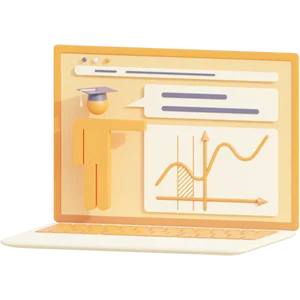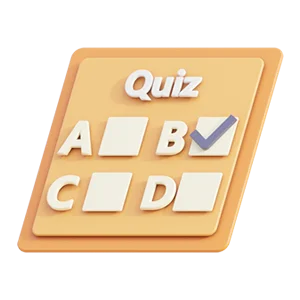Science - University College Dublin
Here you can find summaries for the course Science. Prepare for the exams with practice exams and lecture notes for example ASTRONOMY EXAM 3 STUDY GUIDE and Basic Statistics for Business and Economics Canadian 5th Edition. Filter for the subject you need help with and use the available documents to improve your grades.
Refine results
-
ASTRONOMY EXAM 3 STUDY GUIDE 2024 QUESTIONS AND CORRECT VERIFIED ANSWERS ASTRONOMY EXAM 3 STUDY GUIDE 2024 QUESTIONS AND CORRECT VERIFIED ANSWERS ASTRONOMY EXAM 3 STUDY GUIDE 2024 QUESTIONS AND CORRECT VERIFIED ANSWERS
 University College Dublin
/
Science
/
ASTRONOMY EXAM 3 STUDY GUIDE
University College Dublin
/
Science
/
ASTRONOMY EXAM 3 STUDY GUIDE
-
Genetically Engineered Crops
$ 11,74 17 pages
17 pages
The document (PowerPoint presentation slides) offers a summary of genetically engineered crops, Genetic engineering and Modern Farming, Potential Benefits of GE Crops Over their Counterparts, Human Health Concerns of GE Crops, GE and Allergic Reactions, GE...
 University College Dublin
/
Science
/
Nursing 11
University College Dublin
/
Science
/
Nursing 11
-
Aspects of the Education and Socialization of the Only Child in the Contemporary Family
$ 5,33 85 pages
85 pages
Capitolul I.....................................................................................................................8 FAMILIA I PROCESUL DE SOCIALIZARE ......................................................8 1.1 Privire de ansamblu asupra fa...
 University College Dublin
/
Science
/
University College Dublin
/
Science
/
-
ARGUMENT ................................................................................ 3 CHAPTER 1 .................................................................................. 6 SPECIFIC SIMULTANEOUS TEACHING ACTIVITIES WITHIN ROMANIAN LANGUAGE AN...
 University College Dublin
/
Science
/
University College Dublin
/
Science
/
-
The Usefulness of Kinetic Programs Applied to Patients with Forearm Bone Fractures Contents: CHAPTER I Introduction 1.1 Reason for choosing the theme.................................................................................... .....3 1.2 Hypothesi...
 University College Dublin
/
Science
/
University College Dublin
/
Science
/
-
Balneophysiotherapy Treatment in Cifoze
$ 5,33 24 pages
24 pages
WORK PLAN 1. DEFINITION OF THE DISEASE 2. ETIOPATHOGENY 3. PATHOLOGICAL ANATOMY 4. PRESENTATION OF THE MOST IMPORTANT CLINICAL FORMS (SYMPTOMATOLOGY, CLINICAL AND PARACLINICAL DIAGNOSIS, TREATMENT) 5. DIFFERENTIAL DIAGNOSIS 6. prognosis 7. PROphylactic tre...
 University College Dublin
/
Science
/
University College Dublin
/
Science
/
-
Want to sell your summaries on Knoowy?
Earn passive income from your study documents! Upload your summary today and help students grow from your efforts. Sellers have already earned more than $315,000.00!
Upload document -
Balneophysiotherapy Treatment in Elbow Arthrosis
$ 11,74 23 pages
23 pages
1. GENERAL 2. DEFINITION OF DISEASES 3. ETIOPATHOGENY 3.1. Non-traumatic causes 3.1.1. Rheumatoid polyarthritis or chronic evolving polyarthritis a) Hereditary factor b) Other predisposing factors 3.1.2 Scleroderma a) The genetic factor b) Other determinin...
 University College Dublin
/
Science
/
University College Dublin
/
Science
/
-
Balneophysiotherapy Treatment in in Ankylosis of the Ankle
$ 11,74 28 pages
28 pages
WORK PLAN I. DEFINITION OF THE DISEASE II. etiology III. symptomatically a) HISTORY OF THE CURRENT DISEASE b) PATIENT HISTORY c) PRESENT STATE IV. CRITERIA FOR SUPPORTING THE DIAGNOSIS a) CLINICAL CRITERIA b) RADIOLOGICAL CRITERIA c) LABORATORY CRITERIA V....
 University College Dublin
/
Science
/
University College Dublin
/
Science
/
-
Posttraumatic Recovery of the Ankle Joint
$ 11,74 55 pages
55 pages
Contents: Chapter 1 1.1. The importance and topicality of the theme 1.2. The motivation for choosing the theme Chapter 2 : The theoretical foundation of the research 2.1.Anatomical elements of the ankle and foot 2.2. Statics of the ankle and foot 2.3. Biom...
 University College Dublin
/
Science
/
University College Dublin
/
Science
/
-
CHAPTER I. INTRODUCTION 5 I.1. BRIEF HISTORY 5 I.2. IMPORTANCE AND PURPOSE OF THE WORK 7 I.3. WORK HYPOTHESIS 7 CHAPTER II. THEORETICAL FOUNDATION OF THE WORK 8 II.1. ELBOW SKELETON 8 II.1.1. LOWER END ( EPIPHYSIS ) OF THE HUMERUS 8 II.1.2. UPPER EN...
 University College Dublin
/
Science
/
University College Dublin
/
Science
/
-
Part I. THEORETICAL ASPECTS Chapter 1. 1.1 Introduction................................................... ................................................ ..................5 1.2 The motivation for choosing the theme..........................................
 University College Dublin
/
Science
/
University College Dublin
/
Science
/
-
The "Student Success Toolkit" is a comprehensive bundle of meticulously crafted documents and engaging quizzes designed to empower students on their educational journey. This essential resource is meticulously curated to provide students with the tools the...
 University College Dublin
/
Science
/
University College Dublin
/
Science
/
-
Story- Honest Is The Best Policy.
$ 12,28 2 pages
2 pages
"Honesty is the best policy" is a timeless and universally recognized moral principle that emphasizes the importance of truthfulness and integrity in one's actions and communication. This phrase suggests that being truthful and transparent in our dealings ...
 University College Dublin
/
Science
/
ENGLISH
University College Dublin
/
Science
/
ENGLISH
-
1. GENERAL 2. DEFINITION OF DISEASES 3. ETIOPATHOGENY 3.1. Non-traumatic causes 3.1.1. Rheumatoid polyarthritis or chronic evolving polyarthritis a) Hereditary factor b) Other predisposing factors 3.1.2 Scleroderma a) The genetic factor b) Other determinin...
 University College Dublin
/
Science
/
University College Dublin
/
Science
/
-
INTENTION SHORT HISTORICAL OF BOLIICAPTOL I GENERAL. Liniceviii.CompliciiIix.evolution and prognosisX.Differential diagnosisXI.TreatmentXII.Recovery in ischemic cerebrovascular accident CHAPTER I II KINETOTHERAPEUTIC RECOVERY MODEL AFTER CEREBRIAL V...
 University College Dublin
/
Science
/
University College Dublin
/
Science
/
-
Balneophysiotherapeutic Recovery Methods In Asthenic Neurosis
$ 5,33 23 pages
23 pages
PART I 1/3 I. Generalities - definition, classification, epidemiological data II. Etiopathogenesis - causes, mechanisms, pathological anatomy III. Criteria to support the diagnosis: 1. clinical examination - subjective and objective signs 2. paraclinical i...
 University College Dublin
/
Science
/
University College Dublin
/
Science
/
-
PART I. I. Generalities - definition, classification, epidemiological data II. Etiopathogenesis causes, mechanisms, pathological anatomy III. Criteria to support the diagnosis: a). clinical examination - subjective and objective signs b). Paraclin...
 University College Dublin
/
Science
/
University College Dublin
/
Science
/
-
Balneophysiotherapeutic Recovery Methods in Lordosa
$ 5,33 32 pages
32 pages
PART I. I. Generalities - definition, classification, epidemiological data II. Etiopathogenesis causes, mechanisms, pathological anatomy III. Criteria to support the diagnosis: a). clinical examination - subjective and objective signs b). Paraclin...
 University College Dublin
/
Science
/
University College Dublin
/
Science
/
-
PART I I. Generalities--definition, classification, epidemiological data II. Etiopathogenesis--causes, mechanisms, pathological anatomy III. Criteria to support the diagnosis: a) clinical examination--subjective and objective signs b) paraclinical investig...
 University College Dublin
/
Science
/
University College Dublin
/
Science
/
-
PART I. I. Generalities - definition, classification, epidemiological data II. Etiopathogenesis causes, mechanisms, pathological anatomy III. Criteria to support the diagnosis: a). clinical examination - subjective and objective signs b). Paraclinica...
 University College Dublin
/
Science
/
University College Dublin
/
Science
/
View subjects of Science
 Deal: get 10% off when you purchase 3 or more items!
Deal: get 10% off when you purchase 3 or more items!
Deal: get 10% off when you purchase 3 or more items!









